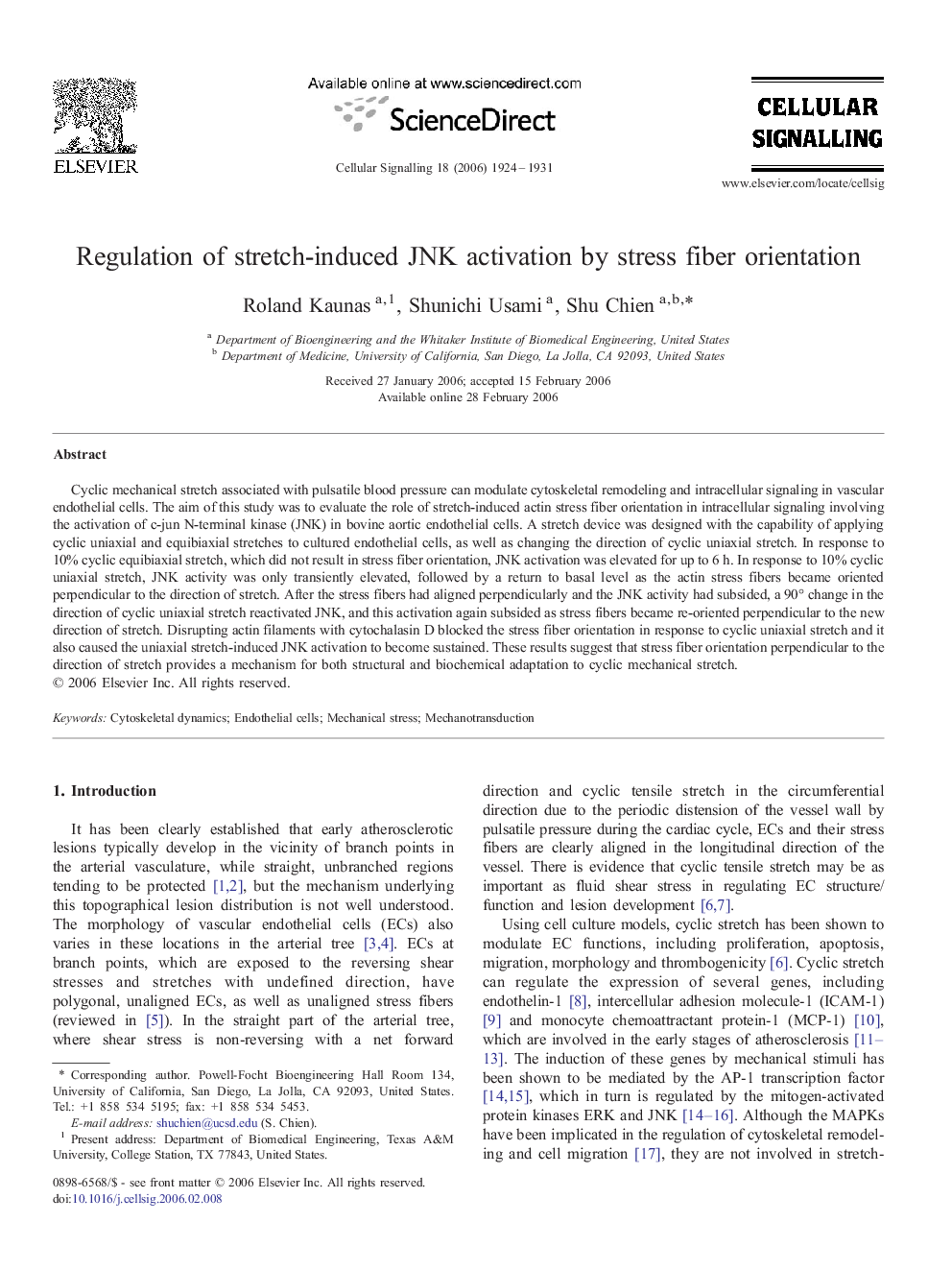| Article ID | Journal | Published Year | Pages | File Type |
|---|---|---|---|---|
| 1964934 | Cellular Signalling | 2006 | 8 Pages |
Cyclic mechanical stretch associated with pulsatile blood pressure can modulate cytoskeletal remodeling and intracellular signaling in vascular endothelial cells. The aim of this study was to evaluate the role of stretch-induced actin stress fiber orientation in intracellular signaling involving the activation of c-jun N-terminal kinase (JNK) in bovine aortic endothelial cells. A stretch device was designed with the capability of applying cyclic uniaxial and equibiaxial stretches to cultured endothelial cells, as well as changing the direction of cyclic uniaxial stretch. In response to 10% cyclic equibiaxial stretch, which did not result in stress fiber orientation, JNK activation was elevated for up to 6 h. In response to 10% cyclic uniaxial stretch, JNK activity was only transiently elevated, followed by a return to basal level as the actin stress fibers became oriented perpendicular to the direction of stretch. After the stress fibers had aligned perpendicularly and the JNK activity had subsided, a 90° change in the direction of cyclic uniaxial stretch reactivated JNK, and this activation again subsided as stress fibers became re-oriented perpendicular to the new direction of stretch. Disrupting actin filaments with cytochalasin D blocked the stress fiber orientation in response to cyclic uniaxial stretch and it also caused the uniaxial stretch-induced JNK activation to become sustained. These results suggest that stress fiber orientation perpendicular to the direction of stretch provides a mechanism for both structural and biochemical adaptation to cyclic mechanical stretch.
